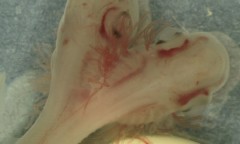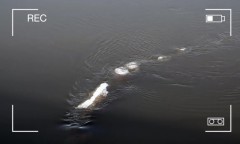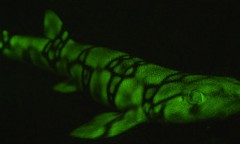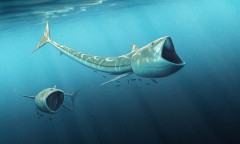By Vishal Goel, | December 19, 2016
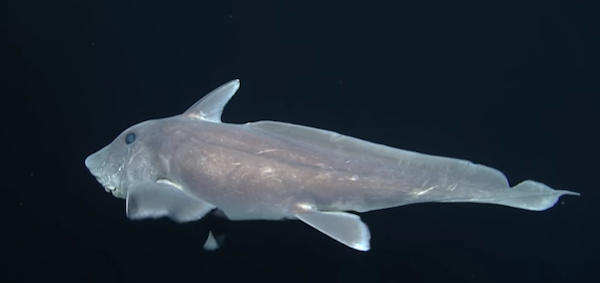
The pointy-nosed blue chimaera, or ghost shark, was filmed alive for the first time ever off the coasts of Hawaii and California. (YouTube)
A rarely-seen species of deep-sea fish known as the "chimera" or "ghost shark," which lives at depths of more than two kilometers, has been filmed for the first time in the northern hemisphere. The chimera belongs to a group of species that emerged 300 million years ago.
The mysterious ghost shark has a patchwork of bizarre features. Its eyes are pale and seemingly dead. It uses tooth plates to grind food instead of teeth. Their heads are lined with cryptic dots, like the remnant scars of ancient stitches. Male chimeras have retractable sex organs on their foreheads. The ghost shark is called by many other nicknames like ratfish, rabbitfish, and spookfish, all because they are look so bizarre in appearance.
Like Us on Facebook
The video captured by scientists of the pointy-nosed blue chimera was taken in the year 2009 but released only recently by the Monterey Bay Aquarium Research Institute, along with a paper by a researcher Lonny Lundsten and his colleagues at the institute.
Six years ago, the researchers sent some remotely operated vehicles (ROVs) towards central California and Hawaii. The ROVs captured footage from depths of up to 6,700 feet and surprised the researchers when they came back; the video showed a species of ghost shark previously only caught in the southwestern Pacific Ocean.
The researchers are still not sure whether the fish they captured is a pointy-nosed blue chimera, although Lundsten consulted with three chimera experts all of whom believed the fish was, in fact, a pointy-nosed blue chimera.
Because of the doubt, the paper refers to the fish they recorded as Hydrolagus cf. trolli, rather than its scientific name, Hydrolagus trolli.
The researchers would have to capture the ghost shark and bring it back to the surface to be sure, the institute said, which is very difficult given these fish are too large, fast, and agile to be caught. Catching one would help researchers to make detailed measurements of its fins and other body parts and perform DNA analysis on its tissue.
The pointy-nosed blue chimera was first discovered by the researcher Dominique Didier Dagit in 2002, in the deep waters around Australia, New Zealand, and New Caledonia.
-
Use of Coronavirus Pandemic Drones Raises Privacy Concerns: Drones Spread Fear, Local Officials Say

-
Coronavirus Hampers The Delivery Of Lockheed Martin F-35 Stealth Fighters For 2020

-
Instagram Speeds Up Plans to Add Account Memorialization Feature Due to COVID-19 Deaths

-
NASA: Perseverance Plans to Bring 'Mars Rock' to Earth in 2031

-
600 Dead And 3,000 In The Hospital as Iranians Believed Drinking High-Concentrations of Alcohol Can Cure The Coronavirus

-
600 Dead And 3,000 In The Hospital as Iranians Believed Drinking High-Concentrations of Alcohol Can Cure The Coronavirus

-
COVID-19: Doctors, Nurses Use Virtual Reality to Learn New Skills in Treating Coronavirus Patients


